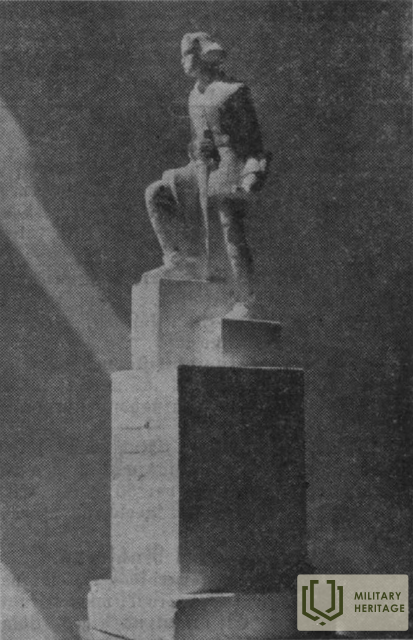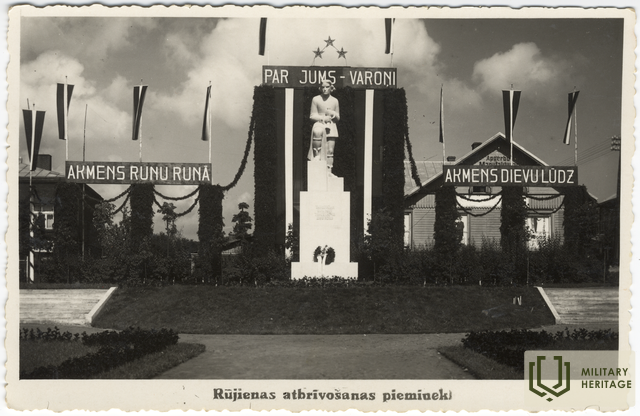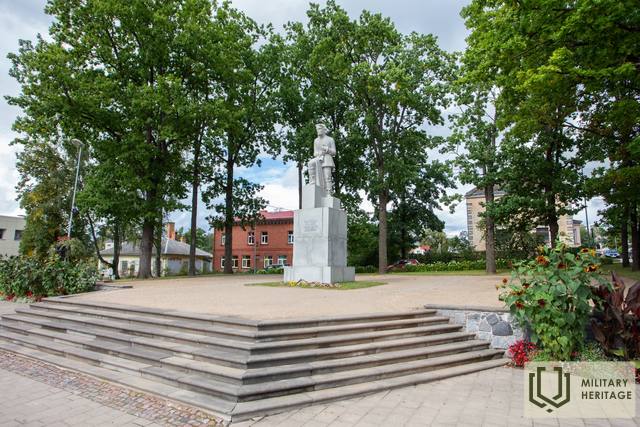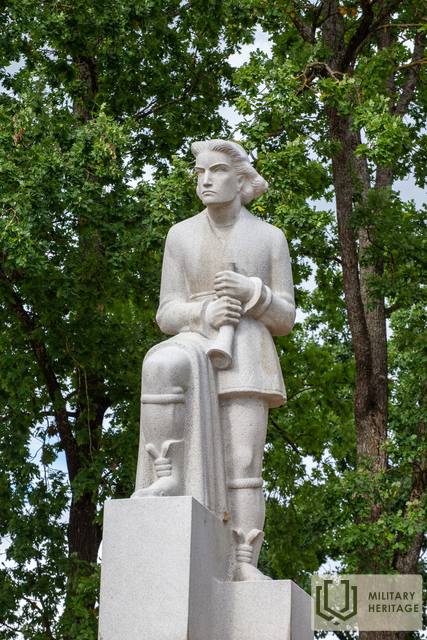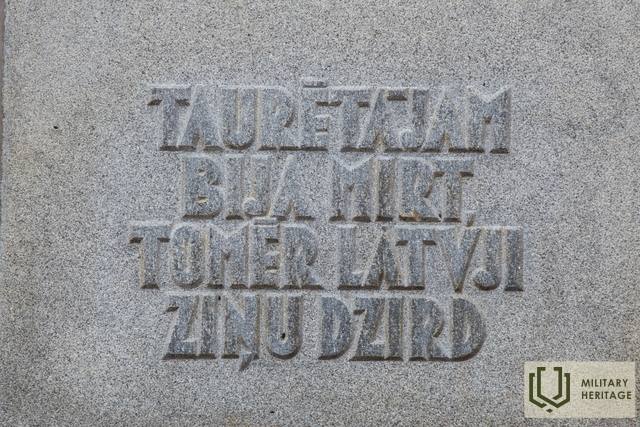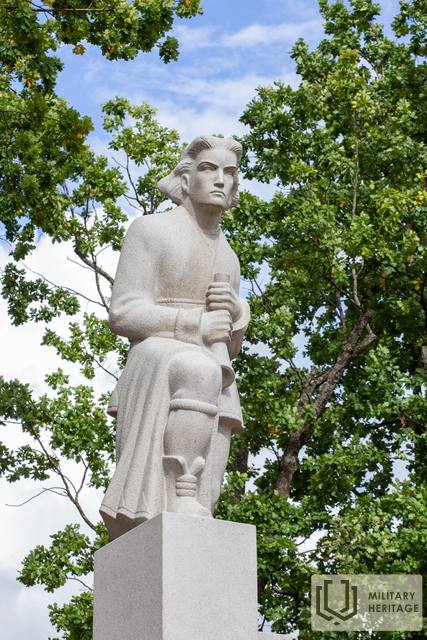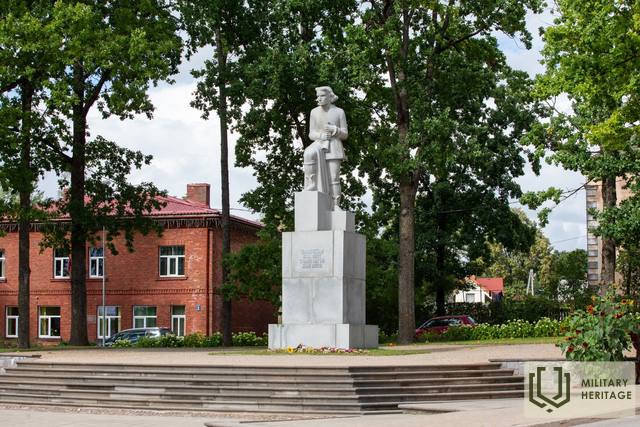Paminklas „Talavos trimitininkas“ Memorialinė vieta
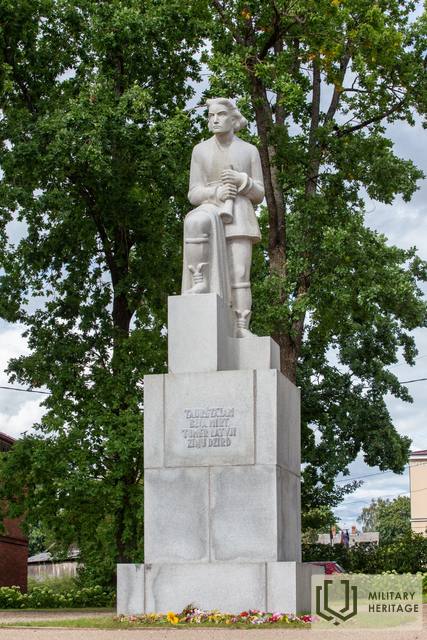

 152
152



Įsikūręs Rūjienos centro aikštėje.
Trijų metrų aukščio senovės Latvijos gvardijos kareivio atvaizdas, išdrožtas iš pilko suomiško granito, vadinamas „Tālavo trimitininku“, pastatytas ant trijų metrų aukščio granito pjedestalo, tačiau bendras paminklo aukštis siekia 7,5 metro. Pradiniuose eskizuose ir modeliuose K. Zemdega į kario rankas įdėjo kardą, kuris vėliau buvo pakeistas trimitu. Paminklas buvo atidengtas 1937 m. rugpjūčio 15 d.
Šis paminklas atspindi sunkią mūsų valstybės ir kariuomenės kūrimosi situaciją, taip pat šių įvykių vertinimą. Iškart po Latvijos valstybės paskelbimo prasidėjo Raudonosios armijos puolimas, o laikinoji Karlo Ulmanio vyriausybė rado prieglobstį Liepojoje. 1919 m. vasarį, padedant Estijos armijai, prasidėjo Latvijos išlaisvinimas iš šiaurės, o Rūjienos apylinkėse įvyko pirmosios Tērbate besiformuojančių Latvijos kariuomenės mobilizacijos, kurios, vadovaujamos pulkininko Jorgio Zemitano, tapo Šiaurės Latvijos brigada. Šiaurės Latvijos brigada kovojo ne tik su bolševikais, bet ir su landesveru bei Geležine divizija Cėsių mūšiuose. Rūjienos apylinkėse mobilizuoti Šiaurės Latvijos kariai kovojo ir vėlesniuose Nepriklausomybės karo mūšiuose. Po karo pagrindiniai pergalės laurai atiteko generolui Jāniui Balodžiui ir jo vadovaujamai Pietų Latvijos brigadai, tačiau Šiaurės Latvijos brigada dažnai buvo pamirštama. Rūjienoje planuojamas Šiaurės Latvijos brigados paminklas taip pat užtruko ilgai, o 1937 m. atidengtas paminklas oficialiai buvo reklamuojamas kaip Rūjienos krašto išlaisvinimo ir žuvusių karių atminimo paminklas, nepaminint, kad visi Šiaurės Latvijos brigados pulkai savo ištakas turėjo Rūjienoje.
Paminklas yra ne tik populiari turistų lankoma vieta Latvijos ir Estijos turistams, tam tikru mastu tapusi atspirties tašku norint aplankyti keletą kitų Nepriklausomybės karo memorialinių vietų Rūjienoje, bet „Tālavas tauretājs“ yra ir sustojimo vieta įvairaus lygio Estijos ir Latvijos valstybės bei vietos valdžios pareigūnams.
Rūjienos išlaisvinimo ir žuvusių karių paminklas, geriau žinomas kaip „Tolamas tauretājs“ (Tolimas ragas), 1998 m. spalio 29 d. buvo įtrauktas į valstybės saugomų kultūros paminklų sąrašą kaip nacionalinės svarbos meno paminklas (paminklo apsaugos registracijos numeris 4522).
Panaudoti šaltiniai ir literatūra:
Dr.hist. Tālis Vigo Pumpuriņš
https://karavirukapi.blogspot.com/2020/01/rujiena-atbrivosanas-piemineklis.html
Susijusi laiko juosta
Susijusios temos
Susijusi istorija
Apie nacionalinį patriotą pirmąjį leitenantą Vilį Gelbį
Pulkininko leitenanto Vilio Gelbės (1890–1919) likimas atspindi sunkią situaciją kuriant mūsų valstybę ir kariuomenę, taip pat šių įvykių vertinimą.
1918 m. lapkričio 18 d. paskelbus Latvijos valstybę, prasidėjo Latvijos nepriklausomybės karas ir ginkluotųjų pajėgų kūrimo darbai. Pirmosiose Latvijos savanorių kareivių gretose buvo Kurše gimęs jūrų leitenantas Vilis Gelbė.
Šiaurės Latvijos armijos įkūrimo Rūjienos pusėje fragmentas
Šiaurės Latvijos armija buvo Latvijos karinis darinys, veikęs Latvijos nepriklausomybės karo metu, suformuotas nuo 1919 m. vasario 3 d. iki kovo 31 d. Estijos teritorijoje ir Šiaurės Vidžemės regionuose, kuriuos išlaisvino Estijos armija. Iki 1919 m. liepos mėn. brigada logistikos ir operacijų požiūriu buvo pavaldi Estijos ginkluotųjų pajėgų štabui ir Estijos armijos vyriausiajam vadui. Vėliau ji buvo sujungta su Pietų Latvijos brigada, sudarant Latvijos armiją.




